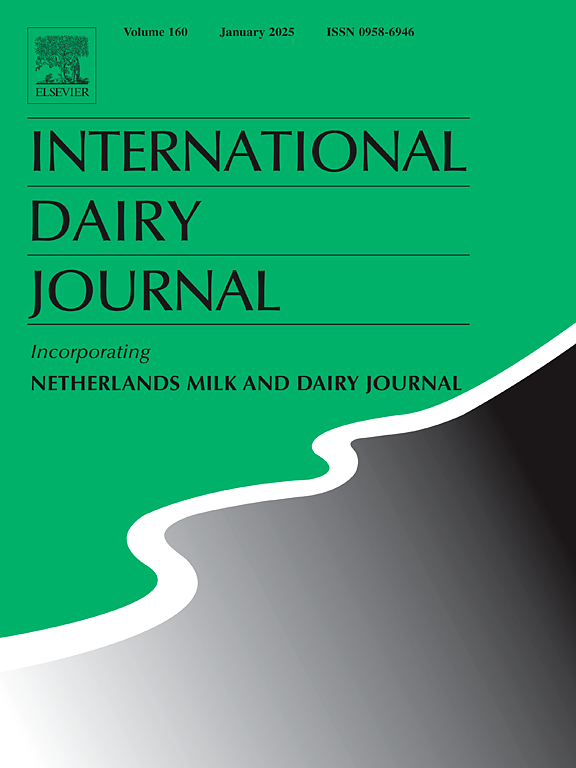Global prevalence and health risk assessment of organochlorine pesticide residues in raw cow's milk: A systematic review
IF 3.4
3区 农林科学
Q2 FOOD SCIENCE & TECHNOLOGY
引用次数: 0
Abstract
Milk is a nutrient-rich food essential for human health, yet contamination with organochlorine pesticides (OCPs) poses serious public health risks due to their toxicity and bioaccumulation potential. This systematic review analyzed 41 studies from the past decade, covering 3870 raw cow's milk samples from 66 regions across 17 countries, including 15 developing and 2 developed nations. Analytical methods such as GC-ECD and GC-MS detected 22 OCPs, with DDTs, endosulfan, HCH isomers, and drins being the most prevalent. DDT and its derivatives were found at the highest levels, particularly in Sudan (2180 ng/g), exceeding maximum residue limits (MRLs). Elevated residues of endosulfan (455 ng/kg in Sahiwal, Pakistan), HCH (926 ng/kg in Paliakalan, India), drins (in Punjab, Pakistan, and Giza, Egypt), and heptachlor (notably in Egypt and Nigeria) were also reported. Health risk assessments revealed hazard quotient (HQ) values above 1 for drins in Alexandria Province and Giza, Egypt, and for heptachlor in Giza, with cumulative hazard index (HI) indicating moderate to high non-carcinogenic risks in Punjab, Pakistan, and multiple Egyptian regions. These findings highlight spatial and seasonal variability in OCP contamination and underscore the need for stricter pesticide regulation, routine milk monitoring, and sustainable pest management practices to protect public health.
生牛奶中有机氯农药残留的全球流行及健康风险评估:系统综述
牛奶是一种营养丰富的食物,对人类健康至关重要,但有机氯农药(OCPs)的污染由于其毒性和生物蓄积潜力而构成严重的公共卫生风险。这项系统综述分析了过去十年的41项研究,涵盖了来自17个国家66个地区的3870份生牛奶样本,其中包括15个发展中国家和2个发达国家。GC-ECD和GC-MS等分析方法共检测到22种OCPs,其中DDTs、硫丹、HCH异构体和drins最为普遍。滴滴涕及其衍生物的含量最高,特别是在苏丹(2180纳克/克),超过了最大残留限量(MRLs)。还报告了硫丹(巴基斯坦Sahiwal的455纳克/公斤)、六氯环己烷(印度Paliakalan的926纳克/公斤)、饮用水(巴基斯坦旁遮普省和埃及吉萨)和七氯(特别是在埃及和尼日利亚)的残留量升高。健康风险评估显示,亚历山大省和埃及吉萨的饮料以及吉萨的七氯的危害商(HQ)值高于1,累积危害指数(HI)表明巴基斯坦旁遮普省和埃及多个地区的中度至高度非致癌风险。这些发现突出了OCP污染的空间和季节变化,并强调需要更严格的农药监管、常规牛奶监测和可持续的有害生物管理措施,以保护公众健康。
本文章由计算机程序翻译,如有差异,请以英文原文为准。
求助全文
约1分钟内获得全文
求助全文
来源期刊

International Dairy Journal
工程技术-食品科技
CiteScore
6.50
自引率
9.70%
发文量
200
审稿时长
49 days
期刊介绍:
The International Dairy Journal publishes significant advancements in dairy science and technology in the form of research articles and critical reviews that are of relevance to the broader international dairy community. Within this scope, research on the science and technology of milk and dairy products and the nutritional and health aspects of dairy foods are included; the journal pays particular attention to applied research and its interface with the dairy industry.
The journal''s coverage includes the following, where directly applicable to dairy science and technology:
• Chemistry and physico-chemical properties of milk constituents
• Microbiology, food safety, enzymology, biotechnology
• Processing and engineering
• Emulsion science, food structure, and texture
• Raw material quality and effect on relevant products
• Flavour and off-flavour development
• Technological functionality and applications of dairy ingredients
• Sensory and consumer sciences
• Nutrition and substantiation of human health implications of milk components or dairy products
International Dairy Journal does not publish papers related to milk production, animal health and other aspects of on-farm milk production unless there is a clear relationship to dairy technology, human health or final product quality.
 求助内容:
求助内容: 应助结果提醒方式:
应助结果提醒方式:


